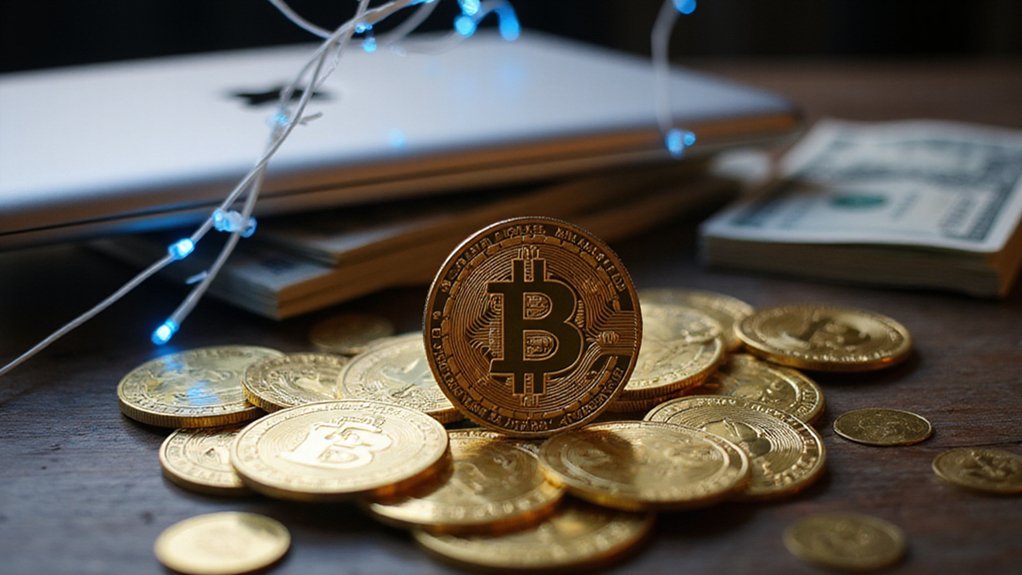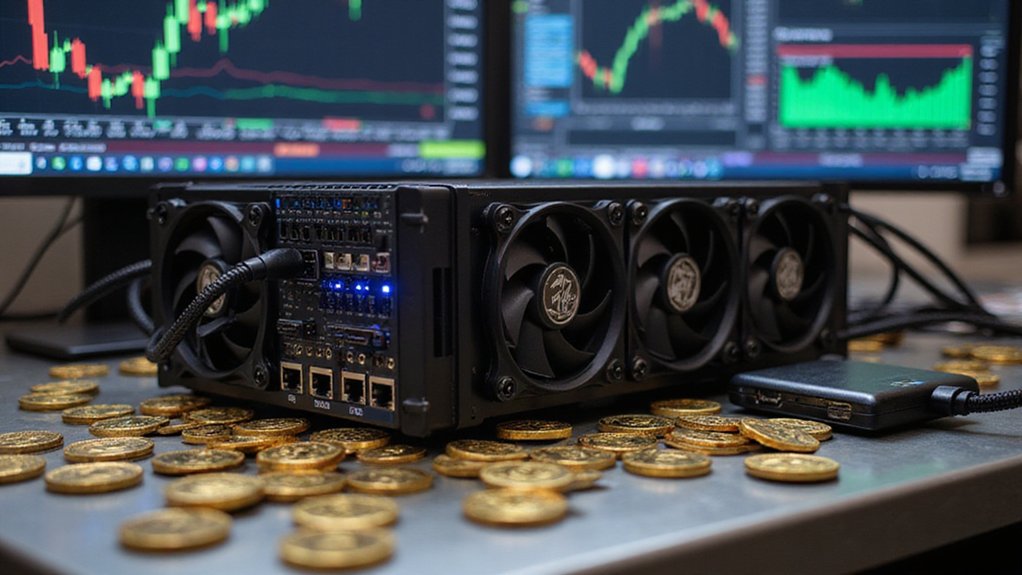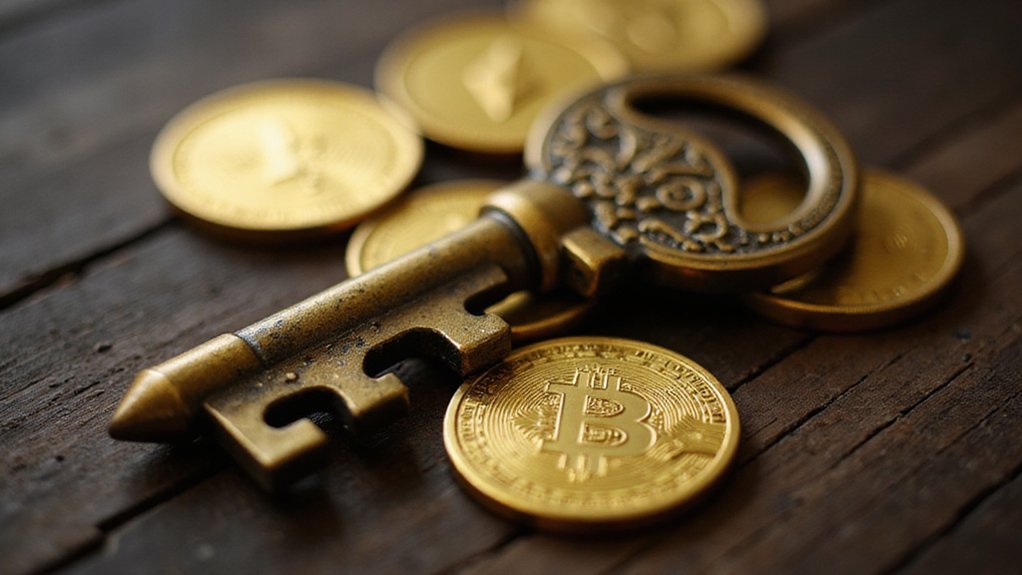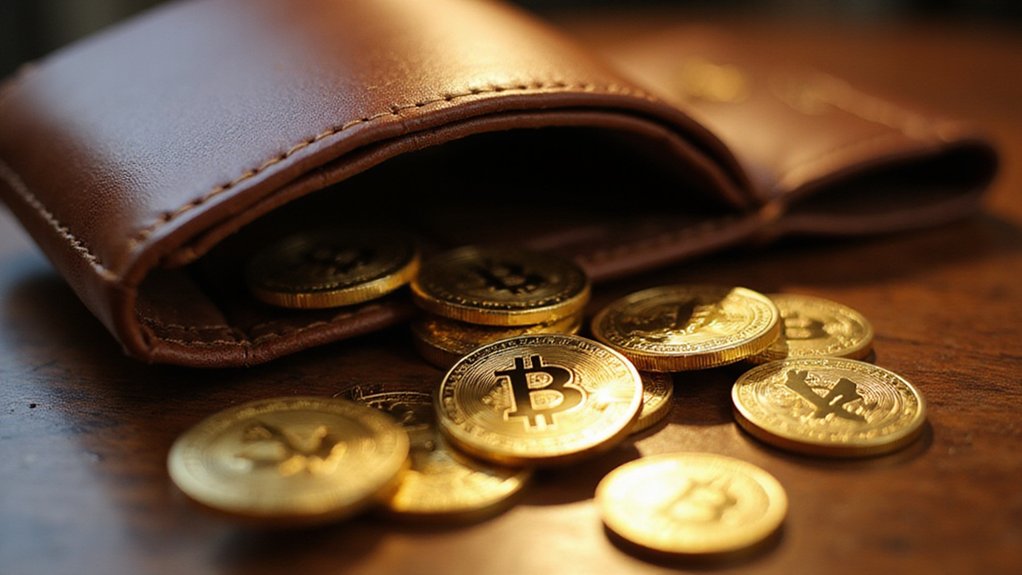The DeFi ecosystem of 2025 rewards strategic platform selection over speculative yield chasing. Lido dominates with $13.9 billion TVL for liquid staking, while Aave ($4.5-10 billion) serves sophisticated borrowers through flash loans. Uniswap’s automated market makers attract traders, Curve Finance minimizes slippage for large transactions, and MakerDAO anchors the space with DAI stablecoin infrastructure. Success depends on matching financial objectives—passive income, active trading, or leveraged positions—to platform specialization rather than chasing unsustainable returns that characterized crypto’s wilder years.

While the crypto winter of 2022-2023 left many investors nursing bruised portfolios and questioning their life choices, the decentralized finance (DeFi) ecosystem has quietly matured into something resembling actual financial infrastructure—a development that would have seemed implausible during the height of yield farming mania when protocols promised triple-digit returns with the casualness of a weather report.
Today’s DeFi landscape presents a more sober collection of platforms, each carving distinct niches in the digital economy. Lido dominates with $13.9 billion in total value locked (TVL), offering liquid staking solutions that allow users to earn rewards while maintaining asset liquidity—a concept that fundamentally transforms the traditional all-or-nothing approach to staking into something more palatable for those who appreciate options.
Today’s DeFi ecosystem has evolved from speculative chaos into practical financial infrastructure, with platforms finally serving distinct purposes rather than chasing unsustainable yields.
Aave commands respect with its $4.5-10 billion TVL, functioning as a decentralized lending protocol that introduced flash loans—financial instruments that allow borrowing without collateral, provided the loan is repaid within the same transaction block. MakerDAO, the grandfather of DeFi protocols, maintains its $4.9 billion TVL through its pioneering collateralized debt position system, creating the DAI stablecoin that has weathered more market turbulence than most traditional currencies.
Uniswap continues revolutionizing trading through its automated market maker technology, facilitating permissionless exchanges with $3.2-4 billion in TVL. The platform eliminated the need for traditional order books, replacing them with liquidity pools—a innovation that seemed counterintuitive until it proved remarkably effective. These platforms enable peer-to-peer transactions without requiring traditional banking infrastructure, fundamentally reshaping how users interact with financial services.
Curve Finance specializes in stablecoin trading across thirteen chains with $2.1 billion TVL, optimizing for low-slippage swaps that make large transactions feasible without devastating price impact. JustLend captures $3.7 billion on TRON, demonstrating that Ethereum alternatives can attract substantial capital, while Compound ($1.8 billion) and Convex Finance ($1.7 billion) focus on algorithmic lending and yield enhancement respectively.
Selecting the appropriate platform depends on specific financial objectives: passive income seekers gravitate toward Lido, traders prefer Uniswap or Curve, and borrowers examine Aave or MakerDAO. The growth trajectory remains impressive, with the user base expanding from just 91,000 users in January 2020 to over 5 million participants today. These platforms leverage smart contracts to ensure automatic execution of agreements, eliminating the need for traditional intermediaries and enhancing transaction security.
The ecosystem’s maturation means choosing based on utility rather than speculative fervor—a revitalizing mundane development in an industry historically allergic to sensibility.
Frequently Asked Questions
What Are the Minimum Investment Amounts Required for Different Defi Platforms?
DeFi platforms exhibit remarkable flexibility regarding minimum investments, with most imposing no formal thresholds whatsoever.
Uniswap operates without minimums, though Ethereum’s gas fees often dictate practical entry points.
Aave requires collateral for borrowing (amounts varying by asset), while prediction markets accept wagers as modest as $1.
The absence of traditional barriers—how invigoratingly democratic—means transaction costs frequently exceed the theoretical minimums, creating an amusing paradox where “no minimum” becomes meaningless for smaller investors.
How Do I Calculate Potential Returns and Risks Before Investing?
Calculating potential returns requires analyzing yield rates, historical performance data, and market volatility patterns across platforms.
Risk assessment involves evaluating smart contract vulnerabilities, liquidity constraints, and systemic exposure—because apparently traditional due diligence wasn’t complicated enough.
Diversification across multiple protocols helps stabilize returns while mitigating concentration risk.
Utilizing specialized risk assessment tools provides more accurate probability estimates, though one wonders if sophisticated modeling can truly predict DeFi’s inherent unpredictability.
Are Defi Platforms Regulated and What Legal Protections Do Users Have?
DeFi platforms operate in regulatory limbo, with oversight varying dramatically by jurisdiction and evolving rapidly.
While recent U.S. Treasury rules target certain DeFi brokers for reporting requirements, core protocol developers remain largely unregulated.
Users enjoy smart contract transparency but sacrifice traditional protections like deposit insurance or guaranteed dispute resolution.
Private key custody places full responsibility on holders, with minimal legal recourse for theft or loss—a rather stark departure from conventional banking safeguards.
What Happens to My Funds if a Defi Platform Gets Hacked?
When DeFi platforms suffer breaches, users’ funds typically vanish into the digital ether with little recourse.
Unlike traditional banking’s regulatory safety nets, DeFi operates in a legal gray area where recovery depends largely on the platform’s goodwill and available treasury reserves.
While blockchain intelligence tools have improved asset tracing capabilities, the decentralized nature that attracts investors ironically becomes their greatest vulnerability when seeking compensation for stolen funds.
How Do I Withdraw My Earnings and What Are the Fees?
DeFi withdrawals require a multi-step dance: transfer assets to centralized exchanges like Binance or Kraken, swap crypto to fiat, then withdraw to bank accounts.
Network gas fees (often eyebrow-raising on Ethereum) combine with exchange swap fees and withdrawal charges—typically 1-5% total.
Platforms like Crypto.com DeFi Wallet streamline this process through integrated exchanges, though one wonders why “decentralized” finance necessitates such decidedly centralized exit ramps for actual liquidity.









